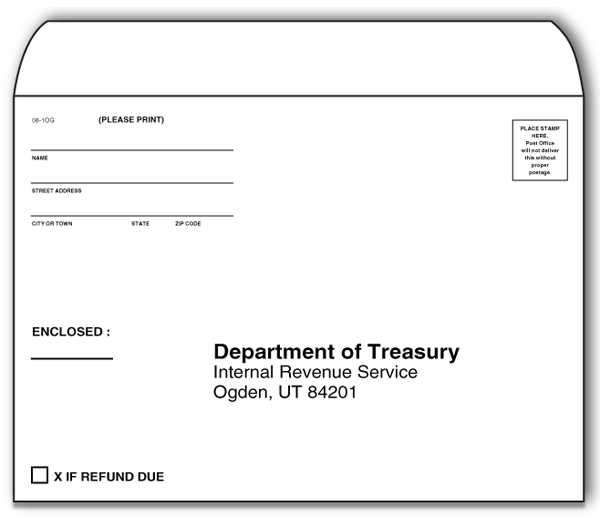How to Check F941 Refund [Find out]
There are many things more enjoyable than paying taxes, especially if you’re a business owner. Failing to do so, however, can be costly and get you in a lot of trouble.
Although some initiatives in 2020 and 2021 from the United States government were designed to help businesses deal with the financial strain from the COVID-19 pandemic, applying for them can be complex and confusing. Perhaps you’ve already found that out after trying to claim your employee retention tax credit. Does Form 941 sound familiar?
What Does Form 941 Have to Do With the Employee Retention Tax Credit?
Employers use Form 941 from the Internal Revenue Service (IRS) for two primary reasons: to report income taxes, Social Security tax or Medicare tax withheld from employees’ paychecks and to pay their portion of Social Security or Medicare tax. Most individuals or businesses that pay wages to an employee are required to file a Form 941 every quarter – even if there aren’t employees during some of them. Exceptions include seasonal business employers, employers of household employees and employers of farm employees.

Each Form 941 you file reports the total amount of tax you withheld during that specific quarter. The four quarterly filing deadlines are April 30, July 31, October 31 and January 31.
Form 941 has been in the news more over the past few months because some employers are amending their Form 941 to get a retroactive refund of a COVID-19 payroll tax credit. That credit, known as the employee retention tax credit , was introduced through the Coronavirus Aid, Relief and Economic Security (CARES) Act. A refundable and non-refundable tax credit that businesses can claim on qualified wages, including some health insurance costs, paid to employees, the goal of the employee retention credit (ERC) was to encourage eligible employers to keep their employees on the payroll during the COVID-19 outbreak.
The advantage for employers who have already claimed the employee retention credit on their initial payroll taxes is that they had the opportunity to utilize it to offset their payroll deposits. If you’re an eligible employer who didn’t yet claim the employee retention credit on your 2020 and 2021 Form 941, however, you can now claim a refund.
How Do I File for the Payroll Tax Credit Using Form 941?
Getting a refund doesn’t occur automatically. If your business qualifies for the employee retention credit refund, you’ll have to amend your filed Forms 941 (payroll tax forms ).
To start, download Form 941-X from the Internal Revenue Service website. Again, you must file Form 941-X for each calendar quarter in which you wish to claim the employee retention credit refund. So, if you’re filing for each of the last three quarters in 2020 and each of the first three quarters in 2021, you’ll use six separate forms. You must submit Form 941-X within three years of the filing deadline for your original Form 941.

On Form 941-X, submit your qualified wages paid, including any applicable healthcare costs. You can copy the information you use for this form – quarterly wages paid and deposits made – from your original Form 941. Revise any errors you previously made.
Next, download the worksheets you need to calculate your Form 941 tax credit. Note that you might also be able to credit for paying qualified family and sick leave wages.
Here’s a list of the primary worksheets included in the IRS’ instructions for Form 941-X:
- Worksheet 1 (Page 27): Adjusted Credit for Qualified Sick and Family Leave Wages for Leave Taken After March 31, 2020, and Before April 1, 2021
- Worksheet 2 (Page 28): Adjusted Employee Retention Credit for Qualified Wages Paid After March 12, 2020, and Before July 1, 2021
- Worksheet 3 (Page 29): Adjusted Credit for Qualified Sick and Family Leave Wages for Leave Taken After March 31, 2021, and Before October 1, 2021
- Worksheet 4 (Page 30): Adjusted Employee Retention Credit for Qualified Wages Paid After June 30, 2021, and Before January 1, 2022
- Worksheet 5 (Page 31): Adjusted COBRA Premium Assistance Credit
Once you’ve completed and entered these calculations for your F941 refund, make sure you don’t forget to submit the date you discovered the errors when you file an amended Form 941.
Print paper copies of your amended returns – e-filing is not available for amended Form 941. If you live in one of the following states, mail them to Department of the Treasury, Internal Revenue Service, Cincinnati, OH, 45999-0005 :
Connecticut, Delaware, District of Columbia, Florida, Georgia, Illinois, Indiana, Kentucky, Maine, Maryland, Massachusetts, Michigan, New Hampshire, New Jersey, New York, North Carolina, Ohio, Pennsylvania, Rhode Island, South Carolina, Tennessee, Vermont, Virginia, West Virginia, Wisconsin
If you live in one of these states, mail them to Department of the Treasury, Internal Revenue Service, Ogden, Utah, 84201-0005 :
Alabama, Alaska, Arizona, Arkansas, California, Colorado, Hawaii, Idaho, Iowa, Kansas, Louisiana, Minnesota, Mississippi, Missouri, Montana, Nebraska, Nevada, New Mexico, North Dakota, Oklahoma, Oregon, South Dakota, Texas, Utah, Washington, Wyoming
Again, you must submit Form 941-X within three years of the filing deadline for your original Form 941.

How Do I Find Out the Status of My ERC Refund Check?
You must call the IRS phone number at (800) 829-4933. Have your employer ID number, Social Security number and tax return information readily available.

Conclusion
It’s not too late for you to file for your ERC refund, but don’t wait too long and miss out on the credit! IRS processes and forms often are confusing, but we’re here to help.
At Stenson Tamaddon, we’ve handled thousands of refund requests, including those for employee retention credits, the Paycheck Protection Program and more. Our proprietary technology enables us to prioritize compliance – helping you maximize the amount of your business’s credit — all while minimizing risk. By filing with us, you can rest easy knowing that your information will be handled with care and strict compliance.
Check out our blog for information about this and other tax issues, including ERC 101: Does the Employee Retention Credit need to be paid back?
FAQs
How Long Does It Take to Get a 941 Refund?
IRS delays are not uncommon. However, the agency is experiencing even more setbacks due to the COVID-19 pandemic. According to the IRS website, service delays include:
- Processing tax returns filed on paper that need to be corrected
- Answering mail from taxpayers
- Reviewing tax returns received prior to 2023, even for returns filed electronically
If your return status is unclear, you’re not alone. Backlogs at IRS submission processing centers have resulted in some businesses waiting 6-9 months – and sometimes longer – for their refund.

What is the Employee Retention Credit (ERC)?
Introduced through CARES Act, the Employee Retention Tax Credit was established to encourage eligible employers to keep their employees on the payroll during the COVID-19 outbreak. It’s a refundable and non-refundable tax credit that businesses can claim on qualified wages, including some health insurance costs, paid to employees.
The post How to Check F941 Refund [Find out] first appeared on Stentam.
The post How to Check F941 Refund [Find out] appeared first on Stentam.




Lead Types
ERC Exclusive Leads
ERC Inbound Calls
ERC Small Business Data
Our Company
Let’s Connect
Youtube
Contact Us
GetErcLeads.com is Powered By GROW with MKG


